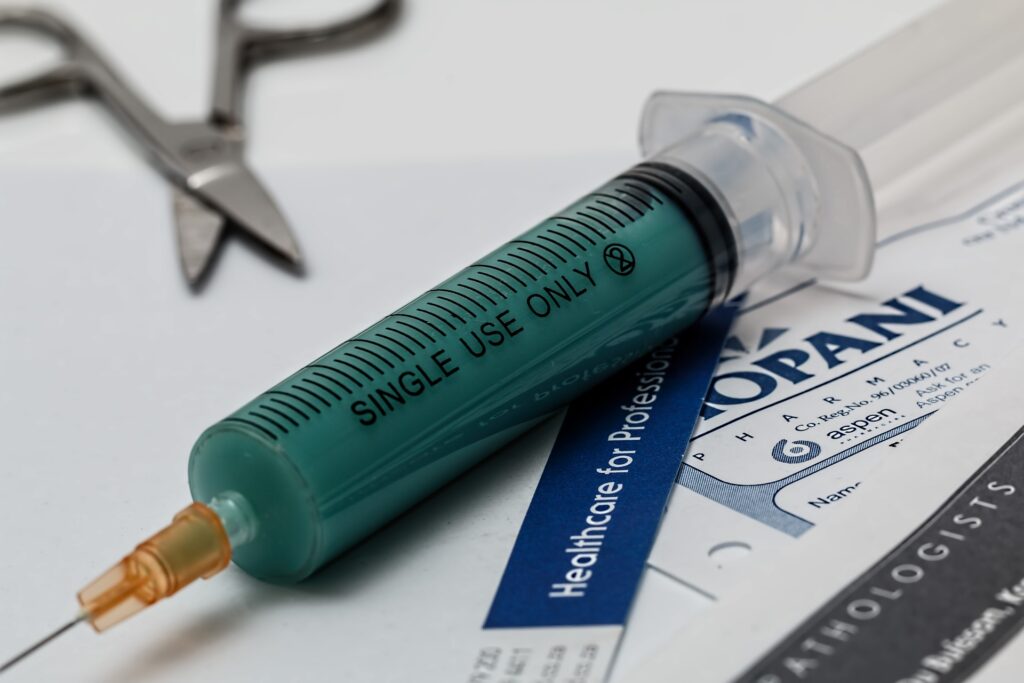As a fundamental component of contemporary medicine, vaccinations aid in the prevention and management of infectious diseases. Vaccines have dramatically decreased the prevalence of fatal diseases for more than 200 years, saving millions of lives and improving population health globally. Infant vaccination is especially important because their immune systems are still developing and they are more vulnerable to diseases. Children are more likely to come into contact with different pathogens during their early years of life, which can result in serious and occasionally fatal infections. For this reason, following the advised immunization schedule is essential to protecting their health. This article delves into the significant significance of vaccinations, highlighting the illnesses they guard against and offering a thorough rundown of the suggested immunization schedule for young children. We may safeguard the healthiest and most susceptible members of society by comprehending and adhering to these rules, so promoting a disease-free and healthier future for everybody.
Table of Contents
ToggleThe Importance of Vaccinations
Preserving Personal Health
Immunizations are essential for protecting young children against a variety of serious and sometimes fatal illnesses. A child’s immune system is successfully trained to identify and fight particular diseases when they receive vaccinations. Through the introduction of a harmless part of the pathogen, the immune system is triggered to develop a defense mechanism. In the event that the child is exposed to the sickness again, their immune system will be ready to react swiftly and efficiently, either completely preventing the illness or greatly lessening its severity. This is known as immunological memory.
Measles, mumps, rubella, polio, and whooping cough are among the illnesses that can have fatal outcomes. For instance, measles can cause fatalities as well as serious side effects like pneumonia and brain damage. Infants can die from whooping cough, but paralysis can result from polio. By immunizing against these illnesses, we give newborns a strong tool to defend against these dangers at a young age, promoting better growth and development.
Vaccinations not only help prevent disease right away, but they also improve children’s long-term health and wellbeing. For example, immunization against infections like Hepatitis B can lower the chance of getting chronic liver disease or liver cancer in later life. This pro-active approach to healthcare highlights the important role immunizations play in promoting population health.
Collective Immunity
Through the theory of “herd immunity,” vaccinations not only protect the individual but also improve community health as a whole. When a sizable section of the populace is immune to an infectious disease, it can slow down its spread and protect others who are unable to get vaccinated because of age, health issues, or allergies. This phenomenon is known as herd immunity. This kind of group protection is especially important for protecting vulnerable populations, such infants, the elderly, and people with compromised immune systems.
When a population has immunized against measles, for example, the virus has fewer opportunities to spread, safeguarding individuals who cannot or will not receive vaccinations. Many illnesses have been successfully eradicated over the world as a result of this idea. A good example is smallpox, which was declared extinct in 1980 as a result of widespread immunization campaigns. These successes highlight how crucial it is to keep vaccination rates high in order to keep the public’s health safe.
Additionally, herd immunity is essential in preventing disease outbreaks. Measles and whooping cough outbreaks have occurred in recent years in areas where vaccination rates are dropping. These outbreaks serve as a reminder of the limitations of herd immunity and the need of continuing effective vaccination campaigns to safeguard the general public’s health.
Preventing Disease Outbreaks
Vaccination campaigns have played a major role in lowering, and in some cases completely eradicating, diseases that formerly resulted in large-scale epidemics and high fatalities. For instance, the polio vaccine’s introduction has nearly completely eradicated the disease; only a small number of nations still record cases. In similar fashion, areas with high vaccination rates have seen a sharp drop in measles infections and deaths as a result of widespread immunization.
Not only may disease outbreaks be stopped, but they also save lives and lessen the financial strain on families and healthcare systems. A significant amount of money may need to be spent on hospital stays, long-term disability care, and public health initiatives to stop the spread of diseases that are preventable by vaccination when they occur. Through immunization, we can stop these outbreaks and guarantee healthier people and stronger healthcare systems.
The considerable decline in illnesses including diphtheria, tetanus, and Haemophiles influenzae type b is proof positive that vaccination campaigns are effective. Prior to the development of vaccines, these illnesses were the main reasons why children became sick and died. In nations with high vaccination rates today, instances of these illnesses are uncommon due to universal immunization.

The Recommended Vaccination Schedule for Infants
Infants are vaccinated against diseases that can be prevented as early as possible thanks to a carefully planned immunization program. Vaccination regimens that are comprehensive are provided by health organizations like the World Health Organization (WHO) and the Centers for Disease Control and Prevention (CDC). The recommended vaccination schedule for infants, from birth to 18 months, is outlined in detail below.
Birth
Within 24 hours of birth, an infant usually receives the Hepatitis B (Hep B) vaccine as their first vaccination. A dangerous liver infection that can cause chronic illness or liver cancer is hepatitis B. In order to avoid mother-to-child transmission during childbirth, which may have long-term health effects for the infant, early vaccination is essential. The groundwork for a strong immune response and long-term protection against Hepatitis B is laid by this early intervention.
Because newborns who catch Hepatitis B from their mothers are at a high risk of acquiring chronic Hepatitis B, which can cause serious liver damage or even liver cancer, the birth dosage of the Hep B vaccine is especially crucial. Healthcare professionals can greatly lower the chance of mother-to-child transmission by giving the vaccination to the infant during the first 24 hours of life, giving the youngster a healthy start in life.
Two Months
When babies are two months old, they get a number of important vaccinations. The DTaP (diphtheria, tetanus, and pertussis) vaccination is given for the first time. Three serious diseases are covered by this vaccine: pertussis, also known as whooping cough, which is especially dangerous for infants and can cause severe coughing fits and respiratory distress; tetanus, which can cause painful muscle stiffness and lockjaw; and diphtheria, which can cause breathing difficulties and heart failure.
Infants also receive the first dose of the vaccine against Haemophiles influenzas type B (Hib). Serious, sometimes fatal diseases like meningitis and pneumonia can be brought on by hirsutism virus. In order to prevent polio, a disease that can result in paralysis and meningitis, the first dose of the inactivated poliovirus vaccine (IPV) is also administered. In order to prevent meningitis, pneumonia, and bloodstream infections caused by pneumococcal illness, the PCV13 conjugate vaccine is given. Finally, the Rotavirus vaccine is administered to guard against Rotavirus, which is one of the main causes of severe diarrhea and infant dehydration. In order to strengthen the infant’s protection against Hepatitis B, the second dose of the vaccine is normally given during this appointment.
Building a solid immune base at two months of age requires receiving all of these vaccinations together. These vaccinations aid in protecting infants during the crucial first few months of life, when they are more susceptible to diseases.
Four Months
Infants receive the second dose of several immunizations at four months of age. The DTaP vaccination continues to strengthen immunity to pertussis, tetanus, and diphtheria after the second dose. The immune response against Haemophiles influenzae type b, polio, and pneumococcal illness is further strengthened by the second doses of the Hib, IPV, and PCV13 vaccines, respectively. To further guard against severe diarrhea and dehydration brought on by rotavirus, a second dose of the vaccination is also given.
For these vaccinations to fully reinforce the immunity induced by the first dosage, a second dose is essential. In order to ensure that the immune system is capable of combating these diseases should they arise, many dosages are necessary in order to attain and sustain optimal protection.
Six Months
Infants receive the third dose of the DTaP, Hib, IPV, and PCV13 vaccines by the time they are six months old. In order to develop a robust and long-lasting immunological response, this increased dosage is essential. Depending on the particular brand of vaccination used, a third dosage of the Rotavirus vaccine can be required. Between the ages of six and eighteen months, infants receive their third dose of the Hepatitis B vaccine at this point. The main series is finished with this last dose, which offers long-term protection against Hepatitis B.
Apart from these vaccinations, yearly influenza vaccinations beginning at six months of age are advised. Due to their increased vulnerability to serious flu complications, infants and young children should receive an annual immunization.
12–15 Months
At this time, newborns receive a number of crucial vaccinations. In order to guarantee ongoing protection against pneumococcal illness and Haemophiles influenzae type B, the fourth dosage of the Hib and PCV13 vaccines is given. The first dose of the Measles, Mumps, and Rubella (MMR) vaccine is administered to guard against the devastating consequences that can arise from these three infectious diseases. In addition, the varicella vaccine—which guards against chickenpox, which can cause serious skin infections, pneumonia, and inflammation of the brain—is given. In addition, the first dose of the Hepatitis A (Hep A) vaccine is administered to guard against the liver illness hepatitis A. To guarantee complete protection, the second dose of Hep A is given six months following the first dose.
This time frame is vital for protecting against diseases that increase in frequency as kids get older and are exposed to more social settings, like daycare and school. Vaccinating people on time contributes to the prevention of outbreaks in these environments.
15–18 Months
Infants receive the fourth dose of the DTaP vaccine at this point. This dosage maintains immunity against pertussis, tetanus, and diphtheria, offering continuous defense throughout infancy and early life.
Maintaining long-term immunity requires the DTaP vaccine’s final dose in the initial series. Especially for young children, pertussis can be rather serious, so this booster dosage is an essential component of the immunization regimen.

Vaccine Safety and Effectiveness
Extensive Examination and Observation
Before being approved for general use, vaccines are put through a rigorous testing process in clinical trials to make sure they are both safe and effective. There are several stages to these studies, beginning with small volunteer groups and working up to thousands of participants. The procedure is exacting and comprehensive, intended to detect any possible adverse reactions and evaluate the effectiveness of the vaccination. Following approval, a vaccine is continuously inspected for safety using a variety of monitoring systems, including the US-based Vaccine Adverse Event Reporting System (VAERS). This continuous observation guarantees that the advantages of immunization considerably exceed any hazards and aids in the detection of any uncommon adverse effects.
Preclinical research, Phases I, II, and III of clinical trials, and post-licensure surveillance are the steps in the development and licensing process for vaccines. Before being given to the general population, this thorough procedure guarantees that vaccines fulfill the highest requirements of safety and effectiveness.
Typical Myths
Though there is ample data to support the safety and effectiveness of vaccines, misperceptions and false information continue to circulate. The idea that vaccinations cause autism is among the most widespread fallacies. This false belief stemmed from a discredited 1998 study that was later retracted for using phony data and violating ethical standards. Since then, a number of investigations have established that immunizations and autism are unrelated. Among the medical items with the greatest testing and ongoing safety monitoring are vaccines, which are used to protect the public. Making decisions regarding immunizations requires deriving confidence from reliable health authority and reliable scientific facts.
Another widespread misperception is that immunity from a natural infection is superior to that from vaccination. Naturally occurring infections can occasionally boost immunity, but they also carry a high risk of serious disease, complications, and even death. Immunity can be developed safely and under control by vaccinations, shielding recipients from the risks associated with the diseases they protect against.

Taking Care of Vaccine Hesitancy
Understanding Vaccine Hesitancy
The complicated issue of vaccination hesitancy is influenced by a number of factors, such as cultural beliefs, misinformation, and mistrust of healthcare providers. vaccination hesitancy is described as the unwillingness or refusal to vaccinate despite the availability of vaccines. Maintaining high vaccination rates and preserving public health depend on addressing vaccine reluctance.
Techniques for Overcoming Vaccine Hesitancy
Education and Awareness: It’s critical to provide accurate and unbiased information regarding the advantages and security of vaccines. Healthcare professionals are essential in educating parents and resolving their issues.
Engaging Communities: Including influential people and leaders in the community in immunization programs can foster a sense of acceptability and trust among the populace.
Increasing Access: Vaccination rates can be raised by making sure vaccines are easily accessible and readily available, especially in underprivileged communities.
Combating disinformation: Using a variety of platforms, such as social media, to proactively correct disinformation and disseminate evidence-based information can aid in the fight against myths and misconceptions around vaccinations.

Immunizations provide communities and people with defense against a variety of infectious diseases, making them a vital component of public health. Timely vaccinations are essential for protecting infants’ developing immune systems and preventing potentially serious infections. Health organizations like the CDC and WHO support the recommended immunization schedule, which is intended to offer the best protection at the earliest age. By adhering to this regimen, parents may protect their kids against a variety of illnesses and help create a healthy future for everybody. Maintaining high vaccination rates will continue to safeguard the general public’s health, stop disease outbreaks, and save a great deal of lives.
Sources
- Centers for Disease Control and Prevention (CDC). (2023). Recommended Child and Adolescent Immunization Schedule for ages 18 years or younger, United States.
- World Health Organization (WHO). (2023). Immunization schedule by WHO region.
- National Institutes of Health (NIH). (2023). Vaccines and Immunizations.
- American Academy of Pediatrics (AAP). (2023). Childhood Immunization Support Program.
- National Vaccine Information Center (NVIC). (2023). Vaccine Safety and Research.


